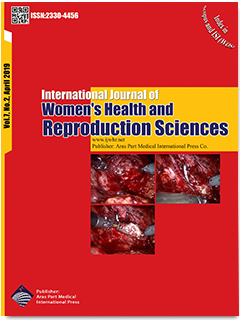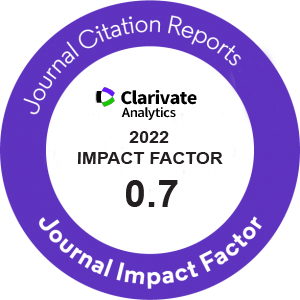| Original Article | |
| Fixed Versus Flexible Antagonist Protocol in Reduced Ovarian Reserve Patients: A Historical Cohort Study | |
| Firouzeh Akbari Asbagh1, Zahra Dehbashi1, Mahmood Moosazadeh2, Amirhossien Pourmand3, Mahbod Ebrahimi1, Naghmeh Pourmand4, Parvin Akbari Asbagh5 | |
| 1Department of Obstetrics and Gynecology, Tehran University of Medical Sciences, Tehran, Iran 2Health Sciences Research Center, Addiction Institute, Mazandaran University of Medical Sciences, Sari, Iran 3School of Medicine, Tehran University of Medical Sciences, Tehran, Iran 4Tehran University of Medical Sciences, Tehran, Iran 5Department of Pediatrics, Tehran University of Medical Sciences, Tehran, Iran |
|
|
IJWHR 2019; 7: 180-184 DOI: 10.15296/ijwhr.2019.30 Viewed : 2819 times Downloaded : 2513 times. Keywords : Fixed, Flexible, Ovarian |
|
| Full Text(PDF) | Related Articles | |
| Abstract | |
Objectives: The antagonist of gonadotropin-releasing hormone is proven to be effective and safe in preventing a surge in luteinizing hormone (LH) during in vitro fertilization (IVF) cycles. In addition, the differentiation of GnRH antagonist protocols is in timing the initiation of the GnRH antagonist. The present study aimed to compare fixed versus flexible antagonist regimens in patients with reduced ovarian reserve in order to identify a better regimen for these patients. Materials and Methods: This study was of a historical cohort type. Totally, 129 patient files were investigated including 48 versus 66 files related to fixed or flexible protocols, respectively. The mean of age, body mass index (BMI), follicle stimulating hormone (FSH), and anti-Mullerian hormone (AMH), as well as the mean dose of gonadotropin, the mean length of IVF/ICSI cycles, and the mean counts of oocytes and embryos with grading including good, fair, and poor were compared between the 2 groups. Results: The total and mean consumption of gonadotropin dose (recombinant FSH) in the flexible and fixed groups were significantly different (P = 0.05). However, the mean antagonist (cetrotide) doses in the fixed and flexible groups were not significantly different while it was lower in the flexible group (P = 0.50). Finally, the duration of gonadotropin consumption in IVF/ICSI period was not significantly different between the two groups. Conclusions: In general, the fixed protocol is recommended in patients with reduced ovarian reserve since it is simple to use and more cost effective compared to the flexible protocol. |
Cite By, Google Scholar
Google Scholar
PubMed
Online Submission System
 IJWHR ENDNOTE ® Style
IJWHR ENDNOTE ® Style
 Tutorials
Tutorials
 Publication Charge
Women's Reproductive Health Research Center
About Journal
Publication Charge
Women's Reproductive Health Research Center
About Journal
Aras Part Medical International Press Editor-in-Chief
Arash Khaki
Mertihan Kurdoglu Deputy Editor
Zafer Akan























